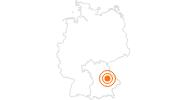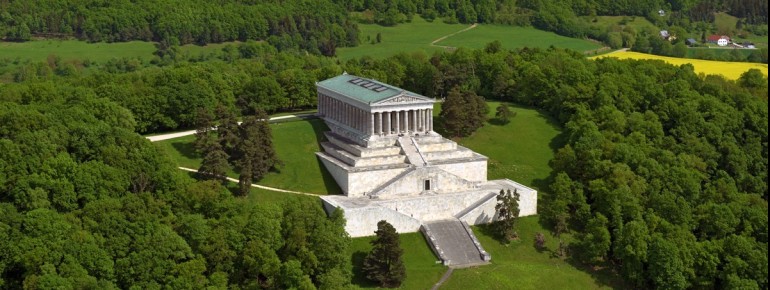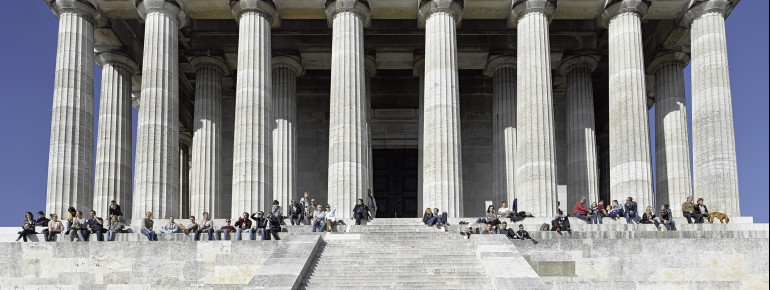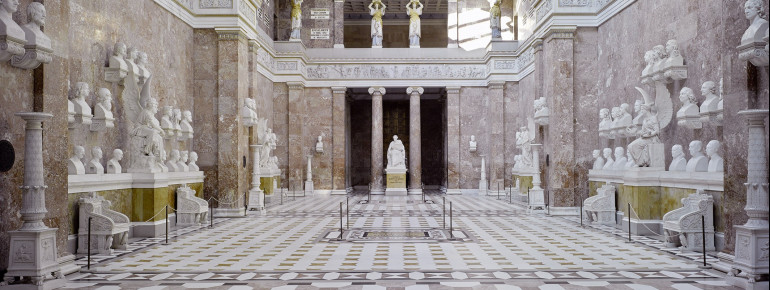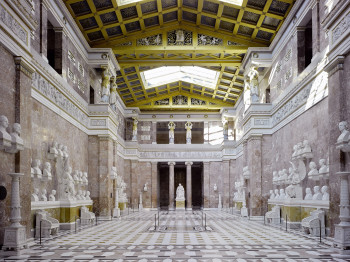Contents
Description
Exposition
The Valhalla is Bavarian King Ludwig I.'s legacy. Many personalities of German history are represented here in marble busts and brasses.
In total, there are 129 marble busts, 65 brasses and a large sculpture, which of course depicts King Ludwig I himself. The people represented are mostly from the fields of history, humanities, sciences, literature, music and visual arts. The latest bust shows the romanticist Heinrich Heine, an important poet of the German Romantic period.
Addition of New Exhibits
Even today applications can be filed to impersonate important personalities of public life, but not before 20 years after their death. If you happen to be German - holding a German passport should do - you can apply with the Bavarian State Ministry.
Architecture
The interior of Valhalla mostly consists of marble, the ceiling is ornamented with figures from German mythology, six goddesses of victory, and the reliefs depict scenes from early German history.
Historical Information
Initiation
Valhalla was built on behalf of King Ludwig I, who was famously passionate about artful constructions in Greek style. The foundation stone was laid by the architect Leo von Klenze on 18th Oct 1830 and opened exactly 12 years later on 18th October 1842.
Planning and Construction
Valhalla, this German hall of fame, had already occupied Ludwig's mind when he was 20 years of age and still a Bavarian crown prince. The historical background was the fact that Prussia had surrendered to Napoleon and Ludwig wanted to create a place for German virtues, he intended to create a place of worship for both cultural and political giants of German history.
Ludwig I and His Passion for Ancient Greece
As a huge fan of Greek architecture, Ludwig I had Valhalla built modelled on the Pantheon on the Acropolis in Athens. Curiously, his special love to ancient Greece is even reflected in Bavaria's German name. In German, Bavaria was originally spelt “Baiern” with an “i”. It was him who decided to swap the “i” for the Greek “y”. Henceforth, Bavaria in German was spelt “Bayern” instead of the original “Baiern”.
How to get there
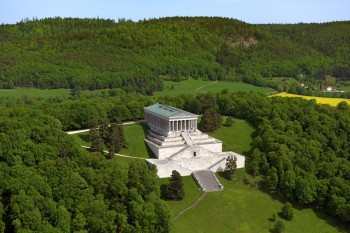
By car
Take motorway A3 until you exit at Neutraubling/ Barbing. From here you can already see Valhalla. From the moment you leave the motorway, Valhalla will be signposted. The last leg of the Bräuberg needs to be completed on foot.
For people who are unable to walk the hill, thereis a possibility to get there by car. The entrance has a barrier-free ramp and in front of Valhalla, two disabled park spaces are provided.
By public transport
Coming from Regensburg, you get to Valhalla using bus lines 5 or 5B, provided by the RVV (Regensburger Verkehrsverbund). Get off at “Reifldinger Straße”. From here it is only 1km (0.6mi) to walk to the sight.
